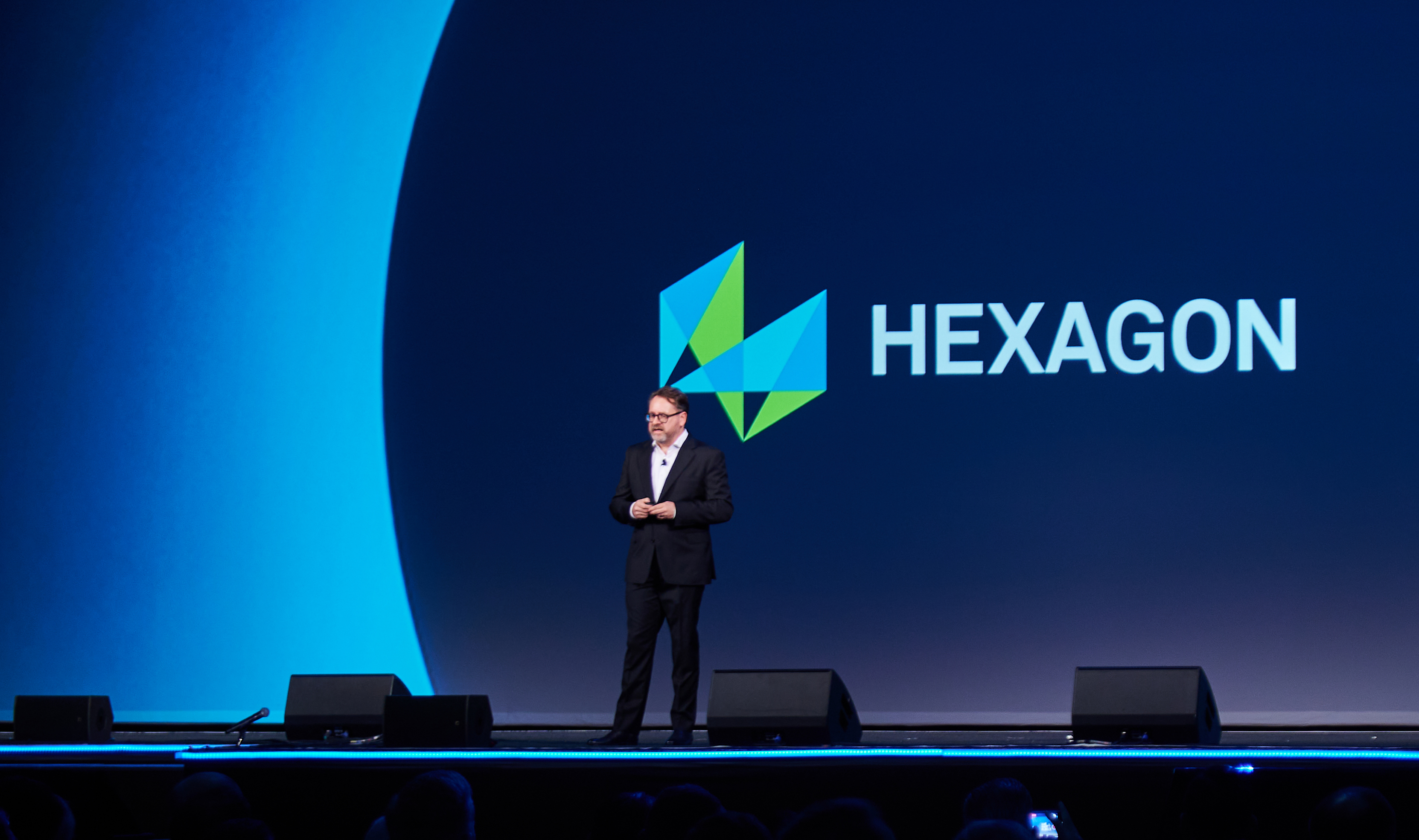
Sustainability. Autonomy. Collaboration.
These topics were amply covered at Stockholm-headquartered Hexagon AB’s HxGN Live Global 2023 conference, which took place June 12-15 at the Caesars Forum conference center in Las Vegas.
However, it was innovation that received its day on June 12, which was billed as a showcase and celebration of ideas, invention, and innovation. The morning program featured three keynote presentations about what Hexagon reports are the only inexhaustible resource capable of delivering sustainable outcomes at speed and scale.
The first keynote featured Burkhart Boeckem, chief technology officer of Hexagon, along with his guests. Titled “Right here. Right now.” to emphasize where and when to innovate, he spoke about the need for first-person innovation and optimism that everything in life can be improved through innovation even though it can be easy to feel pessimistic about the future.

“Innovation is our past, our present and our future,” Boeckem said. “By creating products and solutions that prioritize the needs of the user, we can create a better future for us and for generations to come.”
The day’s next keynote examined world-building. The presentation titled “When reality becomes better than real,” featured Chris Edwards, CEO and co-founder of Los Angeles-based The Third Floor Inc., and Rev Lebaredian, vice president of Omniverse and simulation technology at Nvidia Corp. in Santa Clara, California. The Third Floor uses the virtual world to imagine, plan and solve problems for stories in film, television, games, virtual reality, and themed attractions. Nvidia produces computer hardware and software, including high-performance computers and graphic cards.
During his portion, Edwards discussed how being raised by a father who worked as an aerospace engineer — a rocket scientist — and a mother who was a costume designer heavily influenced his career direction while pointing out that technology has always served art. “I love the dichotomy of art and technology coming together and working together,” Edwards said. “For me, I started researching this avidly and I discovered that art has always been influenced and supported by various forms of technology.”
Lebaredian noted that the goal of the Omniverse platform for creating and operating multiverse applications is to take advantage of all data in a computer system. One area involves working with automotive manufacturers to build new factories to save time and money by exposing and correcting any potential problems early in the process. “The goal is not to just have it look correct but behave correctly. Ultimately, we want all the machines that are operating inside these buildings to be active and react correctly.”
Experiments can be performed, such as changing the speed of a production line, to quickly simulate the outcome, Lebaredian added. “You can thousands or millions of scenarios and look for the best one. What is the best setting, the best configuration, the best speeds and feeds of my system so I can minimize waste and maximize productivity.”
The morning’s final keynote, “When good ideas achieve scale,” was moderated like the second one by Geoff Colvin, senior editor-at-large for Fortune, and featured a panel of five experts: Hexagon’s Boeckem; Andy Pratt, vice president, customer innovation at Redmond, Washington-headquartered Microsoft; Tom Soderstrom, chief scientist at Seattle-headquartered Amazon Web Services Inc. and former IT chief technology and innovation officer at NASA’s Jet Propulsion Laboratory; Tyler Mincey, co-founder and partner of San Francisco-based Baukunst, a collective of creative technologists advancing the art of building; and musician William James Adams Jr., known professionally as will.i.am. In addition to being the lead member of the band Black Eyed Peas, will.i.am is a creative innovator, futurist, tech entrepreneur and philanthropist.
In connection with his philanthropy work, will.i.am said he started his robotics and computer science program in 2008 to provide opportunities for children from housing projects like he grew up in. “All my entrepreneurial work reflects the work I do in the inner city. If I’m encouraging kids to take an interest in science, technology, engineering and mathematics and I’m not pursuing a similar type of career path, then the kids are not going to take that advice or counsel seriously. Everything I do has to be grounded in purpose to prepare inner-city folk for the technological tomorrow that I thought was going to start appearing in 2030. I don’t think anybody knew it was going to impact the world now.”
He added that the program started with 65 students and now serves around 14,000 students in Los Angeles.
To end the presentation, Colvin asked the panelists if they are optimistic. All replied that they are, with will.i.am adding that his level is “gangster optimism.”
One innovation that has gathered considerable interest lately and was frequently discussed at the conference in generative artificial intelligence. Hexagon reports that it chose to challenge the status quo and adopted a holistic and pragmatic approach to developing the company’s advanced analytics and AI/machine learning strategy. “Since Hexagon products are used throughout the manufacturing lifecycle, we can leverage our broad portfolio and deep understanding of manufacturing data and processes to deliver unique insights and automation across the manufacturing lifecycle, from the shop floor to the top floor.”
Certainly, many people support views about AI similar to Theodore Kaczynski. In his 35,000-word manifesto from 1995, “Industrial Society and Its Future,” the recently deceased Unabomber wrote: “If machines are permitted to make all their own decisions … the fate of the human race would be at the mercy of the machines.”
The consensus from the conference was that AI is another tool for manufacturers to boost productivity, reduce waste, improve the bottom line and a host of other positives. Even if a clearer picture of AI’s dire consequences that some people predict will occur, the development will likely continue at an ever-increasing pace. Not only is there money to be made with AI — lots of money — but humans by their nature push the boundary of what’s technologically possible and then continue to push it some more. Having a high level of optimism might not change the outcome, but, in the meantime, you’ll achieve more, be healthier and experience less stress than the alternative.
Contact Details
Related Glossary Terms
- bandsaw blade ( band)
bandsaw blade ( band)
Endless band, normally with serrated teeth, that serves as the cutting tool for cutoff or contour band machines.
- robotics
robotics
Discipline involving self-actuating and self-operating devices. Robots frequently imitate human capabilities, including the ability to manipulate physical objects while evaluating and reacting appropriately to various stimuli. See industrial robot; robot.
- web
web
On a rotating tool, the portion of the tool body that joins the lands. Web is thicker at the shank end, relative to the point end, providing maximum torsional strength.

